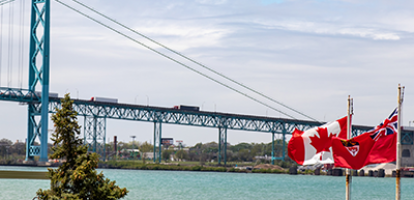From: Benjamin Dachis
To: Jim Leech, Special Advisor on the Canada Infrastructure Bank
Date: March 31, 2017
Re: The Role for the Infrastructure Bank
With the government’s budget planning to expedite the creation of the infrastructure bank you need to set up, it’s now time to turn principles into practice. Here’s how you can get the most public bang from private infrastructure bucks.
Private investment dollars flow to a project if its rate of return exceeds the prevailing interest rate at which businesses can borrow. However, government investment often involves projects in which there is an insufficient private rate of return to enable private investment.
How do you square this? The International Monetary Fund provides a framework for setting investment rules. It shows the difference in the return for a private company as opposed to society’s rate of return. There are differences between the two when there are quantifiable externalities of infrastructure that investors don’t think about when they decide to build (see Figure). On the vertical axis is a private rate of return, and the horizontal axis is a social rate of return. The minimum threshold of investment on the vertical axis is the prevailing private rate of interest: its corollary on the horizontal axis of social cost is the opportunity cost of taxation. Projects in which there is a positive (negative) externality are on the right (left) side of the 45-degree line.
When you analyse individual investments, the infrastructure bank should only support projects that exceed the social opportunity cost of capital. There will also be some projects in which the private rate of return is lower than the social rate of return, even though both are positive (region B). The private sector will still make the investment in such a project – barring the existence of other regulations that are barriers to private investment – thus making public investment unnecessary.
But there are some investments that are socially worthwhile, but don’t exceed the hurdle rate for private investment (region C). This is the sweet spot for the infrastructure bank to subsidize the private provision of these projects. One way to do that is through subordinate capital that takes the first loss in the case of revenues not sufficient to cover expenses. That would bump up the rate of return for private investors enough to exceed their hurdle interest rate.
Now that the government has laid out the plan for the infrastructure bank, the infrastructure bank should judiciously pick the projects in which it can do the most to support privately led projects that otherwise wouldn’t go ahead.
Source: C.D. Howe Institute.
*Benjamin Dachis is the author of the C.D. Howe Institute study New and Improved: How Institutional Investment in Public Infrastructure can Benefit Taxpayers and Consumers
To send a comment or leave feedback, email us at blog@cdhowe.org.






